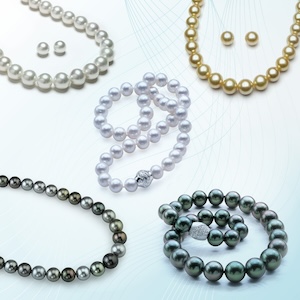
On Friday, the United States announced it was banning the import of Russian diamonds—the latest in the series of actions intended to punish the Russian government for its invasion of Ukraine.
This gladdened some, but frightened others, particularly in India, who argued that many diamonds are often sold in parcels of mixed origin.
On Friday afternoon, the U.S. Treasury’s Office of Foreign Assets Control (OFAC) issued further guidance, which seemingly indicates the restriction may not be as severe as originally thought.
According to the OFAC Frequently Asked Questions, the banned goods have to be “Russian Federation Origin”—which it defines as “goods produced, manufactured, extracted, or processed in the Russian Federation, excluding any Russian Federation origin good that has been incorporated or substantially transformed into a foreign-made product.”
The “substantially transformed” may be key, as that likely means the ban would apply to Russian-mined or cut rough, but not goods cut overseas.
In a little-noticed ruling in 2019, U.S. Customs and Border Protection (CBP) said that Botswana-mined diamonds cut and polished in India needed to be labeled “Indian diamonds” for import purposes, since they underwent “substantial transformation” in India.
“The cutting and polishing of the rough diamonds performed in India is a significant manufacturing operation which has the effect of changing the character of the outer surface of the rough diamond, resulting in a substantial transformation,” wrote Steven A. Mack, a CBP national commodity division specialist. “Therefore, the country of origin of the cut and polished diamonds will be India.”
That seems to indicate that if a diamond is cut and polished in India, China, or elsewhere, it theoretically would still be allowed to be imported into the United States, even if it was originally mined in Russia.
However, a diamond cut in Russia would still be subject to the ban, as are imports of Russian rough.
All that said, groups such as the Jewelers Vigilance Committee (JVC), which updated its guidance on this topic Monday morning, warn that this provision could be tightened up any minute and said industry “members should proceed with extreme caution regarding diamond imports, as the risk of additional future limitations is high.”
“This could be changed at any time,” says Sara Yood, JVC deputy general counsel. “I think what the U.S. is hoping is that other countries will join them in this ban, and they’ll narrow the pathway for Russian diamonds to go elsewhere.
“Industry members should be prepared. If you’re bringing in a rough parcel and you don’t have origin information, it could be risky.”
A possible analogy is the original 2008 ban on Burma rubies, which was also originally limited to gems that came directly from Burma, allowing the country’s gem sellers to circumvent the ban by shipping them through Thailand. The following year, the CBP banned Burmese rubies even if they were substantially transformed elsewhere.
It was not clear at publication time if the Russian diamond ban, which targets “non-industrial diamonds,” would apply to gem-quality synthetic diamonds. Once a major lab-grown diamond producer, Russia now produces around 5% of all lab-grown stones, says analyst Paul Zimnisky.
The country has a far bigger presence on the natural diamond market: It is the world’s largest producer of mined diamonds by volume, though not by value. Its largest miner, Alrosa, is one-third owned by the Russian government.
(Photo courtesy of U.S. Customs and Border Protection)
Follow JCK on Instagram: @jckmagazineFollow JCK on Twitter: @jckmagazine
Follow JCK on Facebook: @jckmagazine






